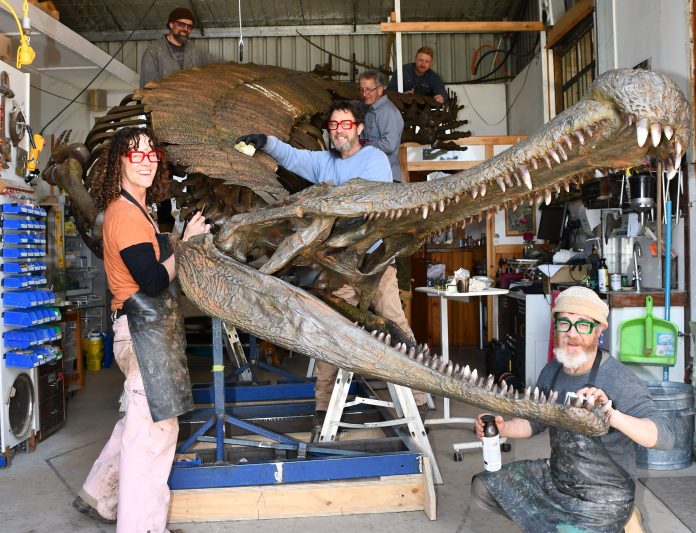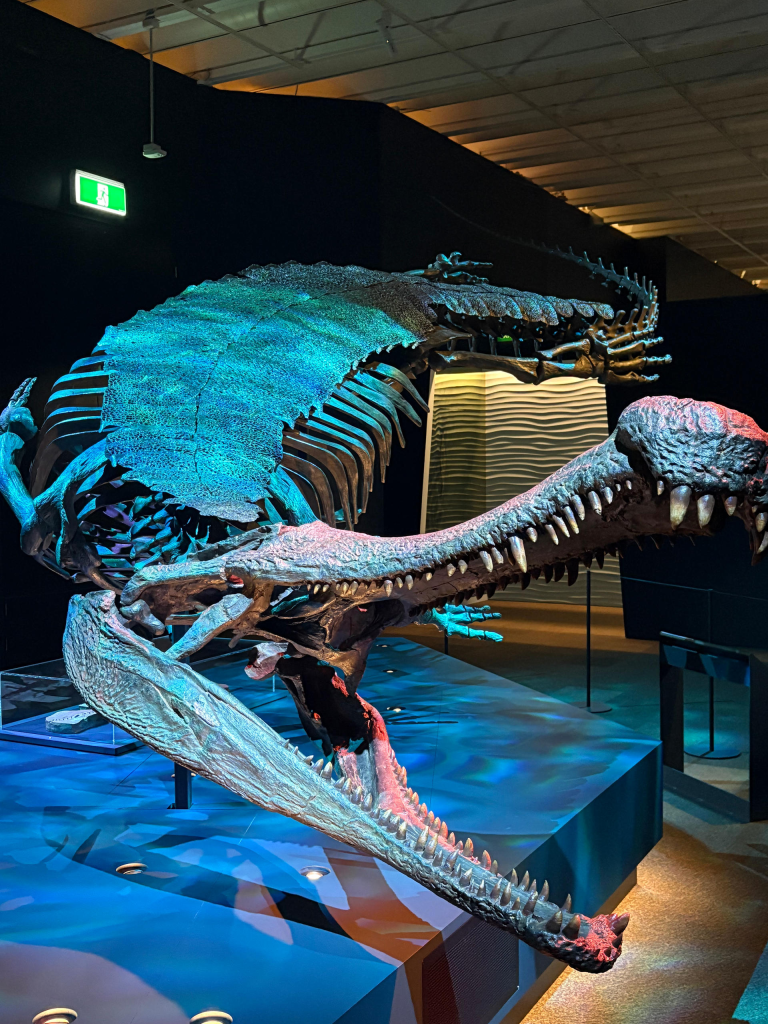
On a frosty morning in Castlemaine, in a large tin shed at Lot 19, a small team of humans gather together. Clad in dusty op-shop clothes, hands and tools working feverishly on hard plastic, bone and steel. All jacked up on lattes, their monkey brains are busy with problems to solve. They are here to honour a remarkable story of life past and into the present.
Like a gigantic three-dimensional jigsaw, they expertly piece together cast fossil bone replicas of Sarcosuchus Imperator, one of 1000 crocodilian species that have lived on this wondrous planet. It is to become a centrepiece in a new crocodile-themed touring exhibition, Lost Giants to Living Legends, which has just opened to the public at the Queensland Museum in Brisbane.
There are few people in Australia with the skill base to build museum exhibits like this. In Castlemaine, Ewin Wood runs a small business, Natural History Productions. He himself is a skilled museum preparator, working full-time in the workshop on botanical, marine and insect models, even taxidermy.
Some jobs are too big for Ewin. For this, he pulled together a team comprising Dean Smith, a local master taxidermist and museum preparator. Nici Wright, a multi-disciplinary artist and sculptor, also welders and skilled engineers Jamie Burke and Jye Geary, and master craftsman and dinophile Doug Alderson.
To get the job over the line, Ewin employed his ex-boss, the former head of Melbourne Museum exhibitions, Peter Swinkles.
This talented team, all students of the natural world, worked furiously over three months to finish this beautiful dynamic articulation of the Sarcosuchus.
So much preparation, experience and effort go into a project like this. So many tools, so many material resources and so many hours are poured into dinosaur articulations. Sarcosuchus is not officially a dinosaur but a distant relative of modern-day crocodiles. Ewin jokes, “It’s more like a crocosaur.”
Sarcosuchus Imperator is Latin for the Flesh Crocodile Emperor, commonly named Super Croc. It lived in the Cretaceous period, more than 100 million years ago. In this vastly different world, the megacontinents of Gondwana and Laurasia were slowly drifting apart. It carved out its niche in the vast river systems, lakes and swamps on a planet much warmer than today. It shared a place in time with other enormous hunters.
More than 10 metres long, Sarcosuchus had an extraordinarily long jaw with 130 bone-crushing teeth, hunted giant armoured fish like the six-metre-long coelacanth.
This giant crocodile also had armoured plates all down its long back to protect it from predators like the giant carnivorous therapod Spinosaurus, which was bigger than T-rex, and as protection from its own kind.
Crocodiles are known to fiercely fight and bite each other to protect their territories. On the armoured plates and skull of the fossil casts, you can actually see marks and indents that may be from violent encounters like this. Dean calls them “beautiful scars” as they tell a story of the rich and exciting lives these creatures lived.
Over the past 10 years, Ewin and his team have produced three museum dinosaurs / crocosaurs. The Muttaburrasaurus, the Titanosaurus and now the Sarcosuchus.
“We love them,” Ewin said.
“It’s a privilege to work with such a talented team, to do justice to the unique anatomy of these creatures and build something of sheer majesty for people to behold.”







